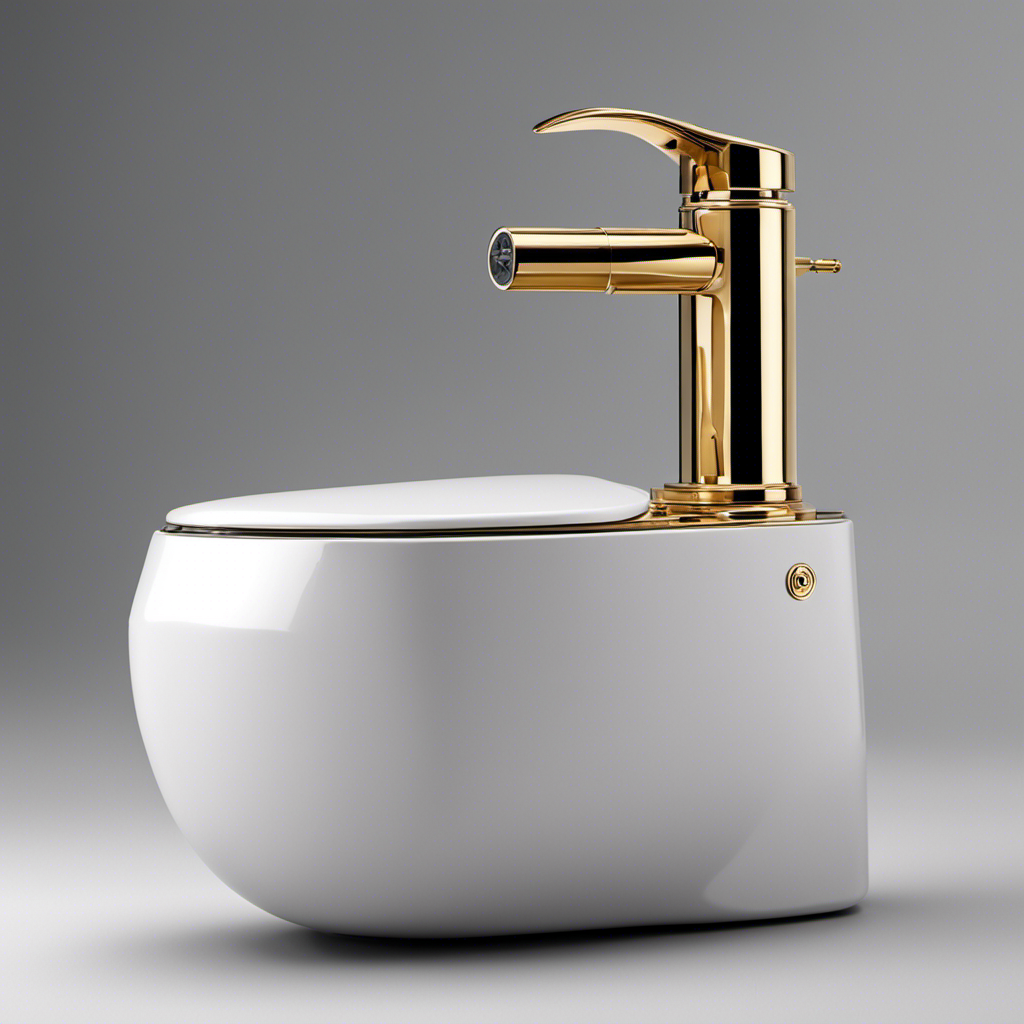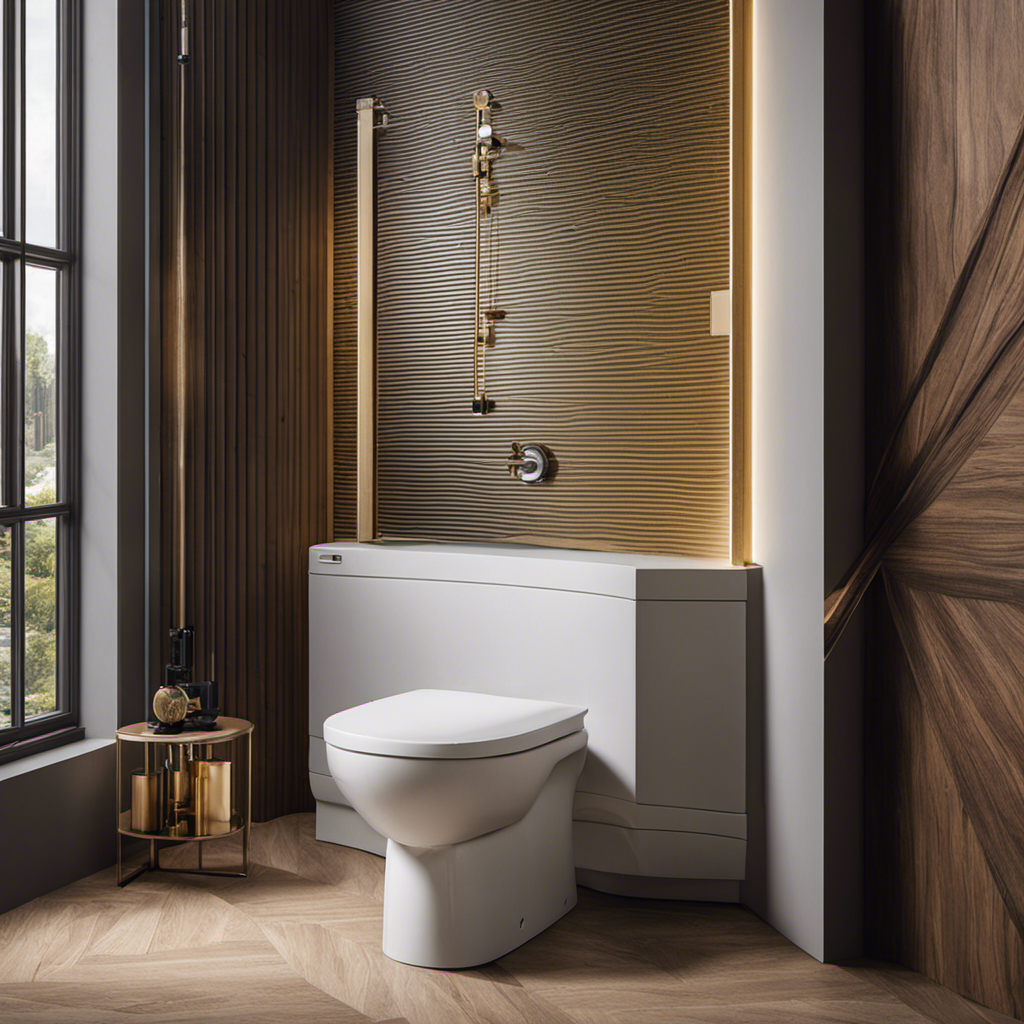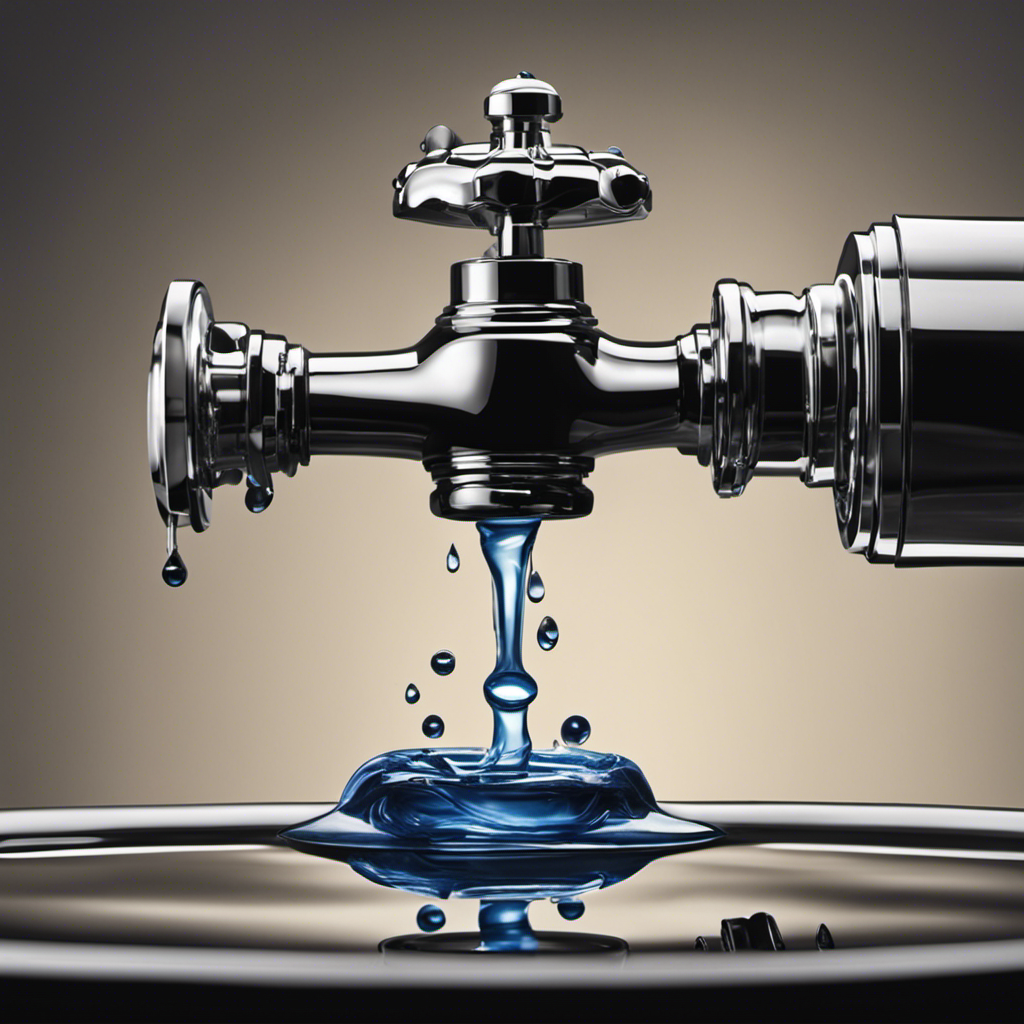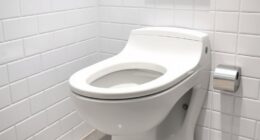Did you know that a faulty toilet flapper can waste up to 200 gallons of water per day? That’s enough to fill a bathtub!
If you’re experiencing a running toilet or inconsistent flushes, it might be time to measure your toilet flapper. In this article, I will guide you through the step-by-step process of measuring a toilet flapper, ensuring accuracy and helping you avoid common mistakes.
Grab your tools and let’s get started on saving water and fixing your toilet!
Key Takeaways
- Proper toilet flapper maintenance prevents water leakage and inefficient flushing.
- The flapper is a small rubber valve responsible for releasing water from the tank into the bowl during flushing.
- Accurate measurement of the flapper’s diameter is crucial for choosing the right flapper size.
- Using the correct tools, such as a measuring tape or ruler, flashlight, and pliers, is essential for measuring and replacing the flapper accurately.
Understanding the Importance of Toilet Flapper Measurement
Understanding the importance of the toilet flapper measurement is crucial for maintaining proper toilet function. Proper toilet flapper maintenance is essential for preventing common problems like water leakage and inefficient flushing.
The toilet flapper is a small rubber valve located at the bottom of the toilet tank. It is responsible for releasing water from the tank into the toilet bowl during flushing. Over time, the flapper can become worn out or damaged, causing it to malfunction.
Signs of a faulty toilet flapper include continuous water running in the tank, weak flushing, and water seeping into the toilet bowl. By regularly measuring the toilet flapper and replacing it when necessary, you can ensure that your toilet operates efficiently and avoids costly water wastage.
Tools Needed for Measuring a Toilet Flapper
To get started, you’ll need a few tools for measuring the size of the flapper in your toilet.
The first tool you’ll need is a measuring tape or ruler. This will help you accurately measure the diameter of the flapper, which is crucial for finding the right replacement.
Next, you’ll need a flashlight to inspect the flapper for any signs of wear and tear. Look for cracks, warping, or discoloration, as these are all indicators of a worn out flapper.
Additionally, a pair of pliers will come in handy for removing the old flapper and installing the new one.
With these tools in hand, you’ll be well-equipped to tackle your toilet flapper replacement project with confidence.
Step-by-Step Guide to Measuring a Toilet Flapper
Start by grabbing a measuring tape or ruler to accurately determine the size of the flapper in your toilet. To help you understand the importance of measuring a toilet flapper, here are some signs of a faulty flapper: inconsistent flushing, water leaks into the bowl, and a constantly running toilet. Now, let’s move on to the step-by-step guide for measuring your toilet flapper.
| Measurement | Description |
|---|---|
| A | Diameter of the flapper |
| B | Length from hinge to the bottom of the flapper |
| C | Width of the hinge |
| D | Distance from the center of the hinge to the center of the flapper hole |
| E | Depth of the flapper hole |
Common Mistakes to Avoid When Measuring a Toilet Flapper
One common mistake to avoid when measuring a toilet flapper is neglecting to accurately determine the diameter. This is crucial in choosing the right flapper size for your toilet. To ensure you get the measurements right, here are three common measuring techniques to follow:
-
Use a measuring tape: Measure the diameter of the flapper by placing the tape across the widest part of the flapper. Make sure to measure from one side to the opposite side.
-
Use calipers: If you have access to calipers, use them to measure the diameter of the flapper. This will provide you with precise measurements.
-
Refer to the manufacturer’s guide: Some flapper manufacturers provide specific instructions on how to measure their flappers. Consult the guide for accurate measurements.
Troubleshooting and Tips for Accurate Toilet Flapper Measurement
Make sure you accurately determine the diameter of the flapper to avoid any mistakes when measuring it for your toilet. Flapper replacement and maintenance are essential for the proper functioning of your toilet.
To measure the flapper accurately, start by shutting off the water supply to the toilet and flushing it to drain the tank. Carefully remove the old flapper and take note of its diameter. Use a measuring tape or ruler to measure the diameter from one side to the other. It’s important to be precise in your measurement to ensure a proper fit for the new flapper.
Once you have the correct diameter, you can confidently purchase a replacement flapper and install it, ensuring a leak-free and efficient toilet.
Frequently Asked Questions
How Often Should I Measure My Toilet Flapper?
I measure my toilet flapper every six months to ensure it’s functioning properly. Signs of a malfunctioning flapper include leaks and inconsistent flushing. Regular cleaning is also important for optimal performance.
Can I Use a Measuring Tape to Measure the Toilet Flapper?
Using a measuring tape to measure the toilet flapper is a convenient and accurate method. It’s recommended to measure it at least once a year for proper functioning. If slightly off, adjust or replace it. Other methods include using a ruler or comparing it to the old flapper. Measure before replacing for proper fit.
What Should I Do if the Toilet Flapper Measurement Is Slightly Off?
If the toilet flapper measurement is slightly off, there are a few alternatives to consider. Troubleshooting options include adjusting the chain length, replacing the flapper with a compatible size, or seeking professional assistance if needed.
Are There Any Alternative Methods for Measuring a Toilet Flapper?
There are alternative methods for measuring a toilet flapper, each with its pros and cons. One method is using a ruler, which provides precise measurements but requires more effort. Another method is using a flapper gauge, which is easier but may not be as accurate.
Can I Replace a Toilet Flapper Without Measuring It First?
No, it is not recommended to replace a toilet flapper without measuring it first. Measuring ensures you get the right size and type of flapper, avoiding common mistakes like leaks or improper fit.
Conclusion
In conclusion, measuring a toilet flapper is a crucial step in maintaining the functionality and efficiency of your toilet. By accurately measuring the flapper, you can ensure that you choose the right replacement part and avoid any potential issues in the future.
Just like a skilled carpenter measures twice before cutting, taking the time to measure your toilet flapper properly will save you from unnecessary hassle and expenses.
Remember, precision is key when it comes to ensuring a smooth and leak-free toilet operation.










